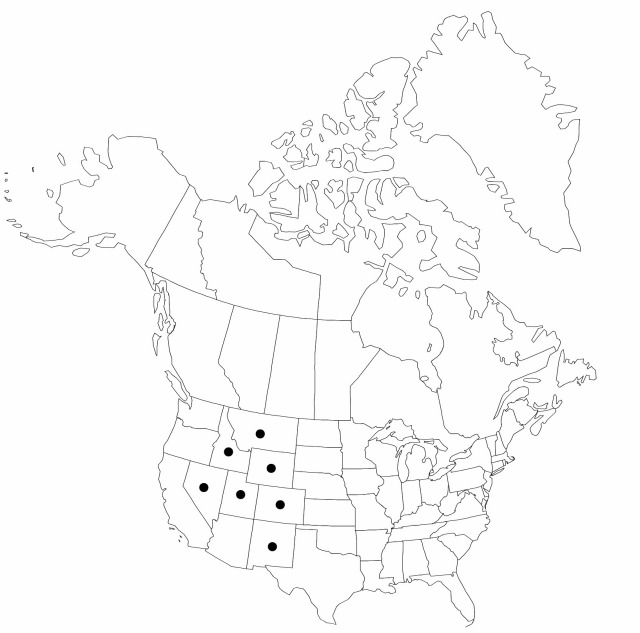Difference between revisions of "Carex elynoides"
Amer. J. Sci. 159: 356. 1900.
imported>Volume Importer |
imported>Volume Importer |
||
| Line 58: | Line 58: | ||
|publication year=1900 | |publication year=1900 | ||
|special status=Illustrated;Endemic | |special status=Illustrated;Endemic | ||
| − | |source xml=https:// | + | |source xml=https://bitbucket.org/aafc-mbb/fna-data-curation/src/2e0870ddd59836b60bcf96646a41e87ea5a5943a/coarse_grained_fna_xml/V23/V23_1085.xml |
|genus=Carex | |genus=Carex | ||
|section=Carex sect. Filifoliae | |section=Carex sect. Filifoliae | ||
Latest revision as of 20:38, 5 November 2020
Culms round or trigonous, filiform, wiry, angles proximal to spike blunt or sharp, 5–22 cm, ± equaling leaves. Leaves: basal leaf sheaths only slightly fibrillose when old; blades bright green, involute-cylindric, quill-shaped, 3–18 cm, 0.2–0.6 mm wide near base. Spike 8–20 × 2–5 mm; staminate portion 4–8(–10) mm. Proximal pistillate scales pale red-brown or golden brown with white or gold margins, broadly obovate, 2–4(–4.7) × 1.7–3.3 mm excluding awns, apex obtuse to awned. Staminate scales red-brown with white margins and pale midstripe, oblong-ovate, apex obtuse. Perigynia 3–9, appressed to ascending, white, usually with golden brown to red-brown area near beak and/or near base, obovate (or elliptic), 2.5–4.4 × 1.2–2 mm, body usually glabrous or sparsely hirsute near base of beak; beak 0.4–0.8(–1) mm, style base not conspicuously exserted from beak; rachilla absent. Achenes obovate to ovate, 1.5–2.7(–3) × (1–)1.2–1.5 mm. Stigmas ± brown.
Phenology: Fruiting spring–summer.
Habitat: Meadows, dryish areas with subsurface moisture
Elevation: 100–3800 m
Distribution

Colo., Idaho, Mont., Nev., N.Mex., Utah, Wyo.
Discussion
Selected References
None.
